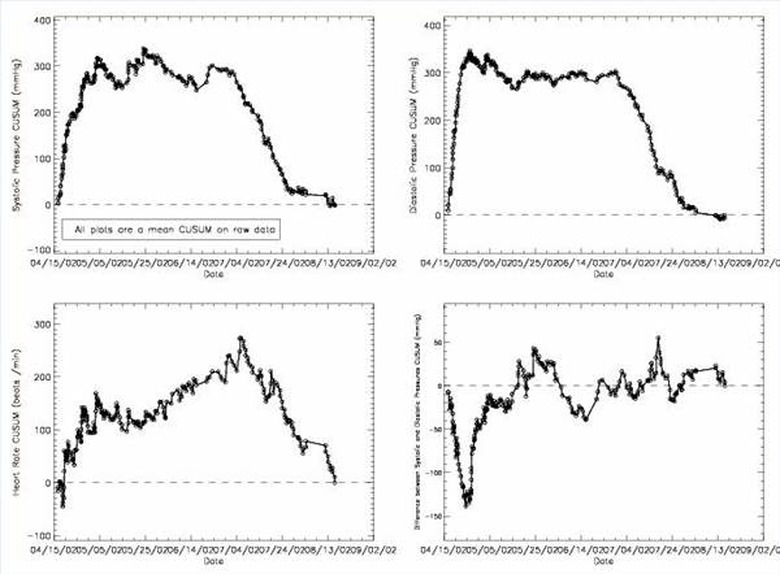How To Calculate CUSUM
CUSUM is short for "cumulative sum." It is a formula used to determine the gradual change in a series of quantities over time. CUSUM is used in many different professions, including, but not limited to, those found in the medical and financial fields. For example, it can be used by a doctor to monitor the change in a diabetic's glucose levels, or it can be used by a financial analyst to analyze specific trends in the marketplace.
Step 1
Write down the quantities for which you want to calculate the CUSUM.
Step 2
Add all of the quantities together.
Step 3
Divide the sum of all the quantities by the number of quantities that there are. This will give you the average or the mean of the quantities.
Step 4
Go back to your original list of quantities written down in Step 1 of the previous section.
Step 5
Take the number representing the mean that was calculated in Step 3 of the previous section and subtract it from the first quantity on the list. If the quantity is greater than the mean, you will get a positive number; if the quantity is less than the mean, you will get a negative number. Write this number down.
Step 6
Move on to the second quantity on the list and again subtract the mean from it. Write this number down beside the one written down in the previous step.
Step 7
Continue in this manner until you have the difference between the mean and each individual quantity. These numbers should now comprise a new list of quantities that represent the difference between the original quantities and the mean.
Step 8
Add all of the numbers from this new list together. The sum of these numbers is the CUSUM.
TL;DR (Too Long; Didn't Read)
By charting the numbers calculated in Section 2, you can generate a graph that displays the general trends that took place for the quantities that you are analyzing.
Warning
Some methods for calculating cumulative sum involve using a "target" number in place of the mean. The variations in quantity are then calculated in relation to this ideal quantity rather than the actual average.
Cite This Article
MLA
Bagley, Soren. "How To Calculate CUSUM" sciencing.com, https://www.sciencing.com/calculate-cusum-5305567/. 24 April 2017.
APA
Bagley, Soren. (2017, April 24). How To Calculate CUSUM. sciencing.com. Retrieved from https://www.sciencing.com/calculate-cusum-5305567/
Chicago
Bagley, Soren. How To Calculate CUSUM last modified March 24, 2022. https://www.sciencing.com/calculate-cusum-5305567/
